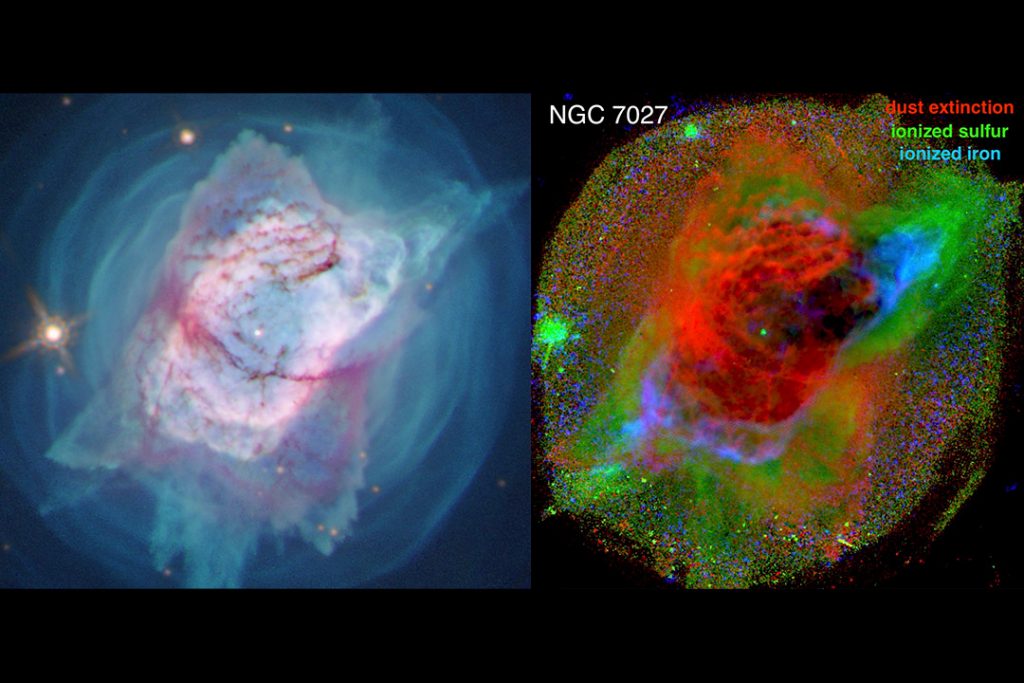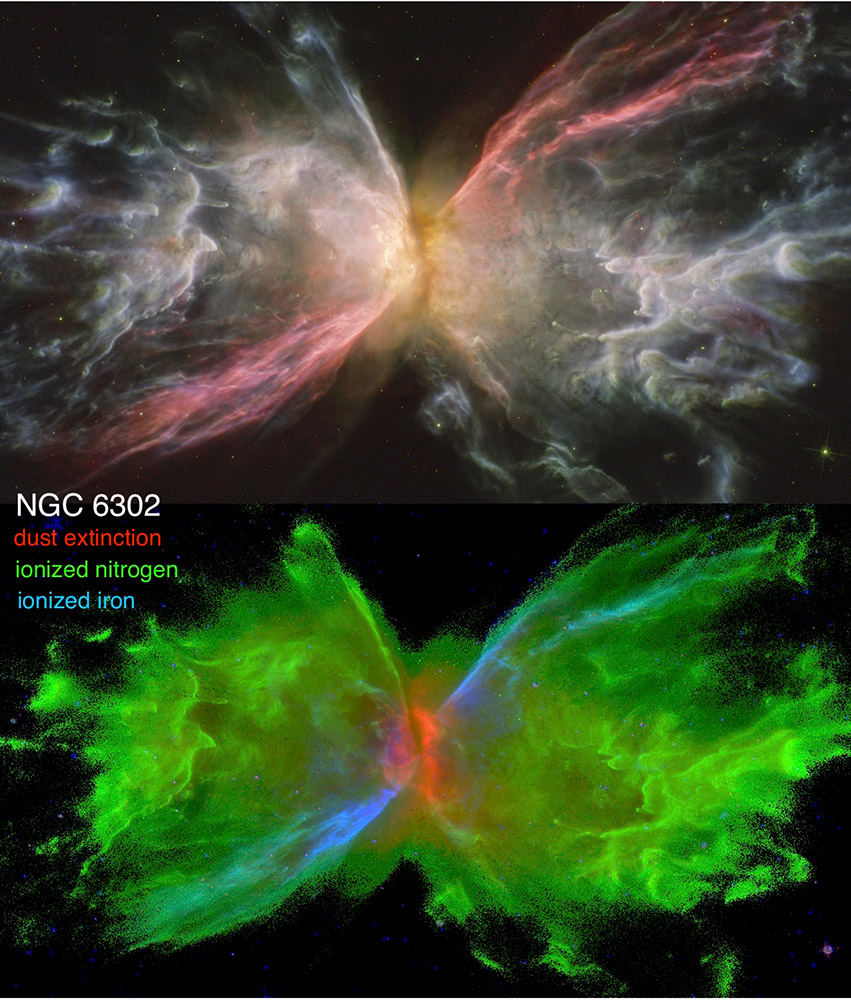
While the American Astronomical Society meeting is over, we still had new stories coming out after we recorded our episode on Friday, and today we start with one of them.
During a press conference, Rochester Institute of Technology’s Joel Kastner presented new research on the long-observed Jewel Bug Nebula. From a regular telescope on the ground, this remnant of a dying star looks like nothing more than a fuzzy bug-shaped blob, but even early Hubble (HST) images revealed an intricate structure of glowing gas and dust, and with each new camera upgrade, HST has revisited this system to see what new details could be resolved.
The Jewel Bug Nebula is what’s called a planetary nebula: a complex system of dust and gas that has been blown off of a dying star. Astronomers don’t entirely understand how these complex shapes form, but we do know that we’re dealing with the effects of a star exhaling its atmosphere in pulses and that material interacting with any companion stars or planets that may be in the system.
The Jewel Bug Nebula is estimated to be about 600 years old, or roughly the age of a vase from the Ming Dynasty. In this time, the material has been moving out and away from where a 1-8 Sun-massed star once shined, and as it moves away, it has been cooling. The core of the star, now a white dwarf, should still be in the center giving off bright UV light, but astronomers haven’t been able to see the stars inside this system, yet. What appears to be a star in the center is just a chance alignment of a random star between us and this nebula.

By looking to see where different kinds of gas and dust are visible, it becomes possible to map out the temperatures of the gas. The violet-appearing structures in the Hubble image, mapped in red in the not-very-pretty structural map on the right, is just dust which occurs where temperatures are coolest. Some of the brightest gas is hot-shocked material with ionized iron, and the remaining material is a more moderate temperature that can be mapped out by looking for ionized sulfur.
According to Kastner: We’re able to see the effect of the dying central star in how it’s shedding and shredding its ejected material. We’re now seeing where material that the central star has tossed away is being dominated by ionized gas, where it’s dominated by cooler dust, and even how the hot gas is being ionized, whether by the star’s UV or by collisions caused by its present, fast winds.
One of the most amazing and frustrating things about planetary nebulae is the variety of shapes they come in. In addition to viewing the Jewel Bug Nebula, Kastner and his team also observed the roughly 2000-year-old Butterfly Nebula. Both the systems are thought to have binary stars in their core, and it is possible that the reason they look so remarkably different is simply viewing angle. In this system, the narrow body of the butterfly is the dust, and hot ionized iron traces the top of the right wing and the bottom of the left. The object isn’t flat, however, and the butterfly is more like an hourglass viewed edge-on, while the Jewel Bug is more like a really warped hourglass viewed from the top down.
What was presented at AAS is only the beginning of this research, and we look forward to seeing more nebulae analyzed and a longer research paper in the future. When those come out, we’ll bring them to you here.




 Join the Crew!
Join the Crew!
 Escape Velocity Space News
Escape Velocity Space News
Planetary nebulae need a new name as the current name tends to confuse the lay public. I know why they were named “planetary” long ago. We should just call them extended gas stars